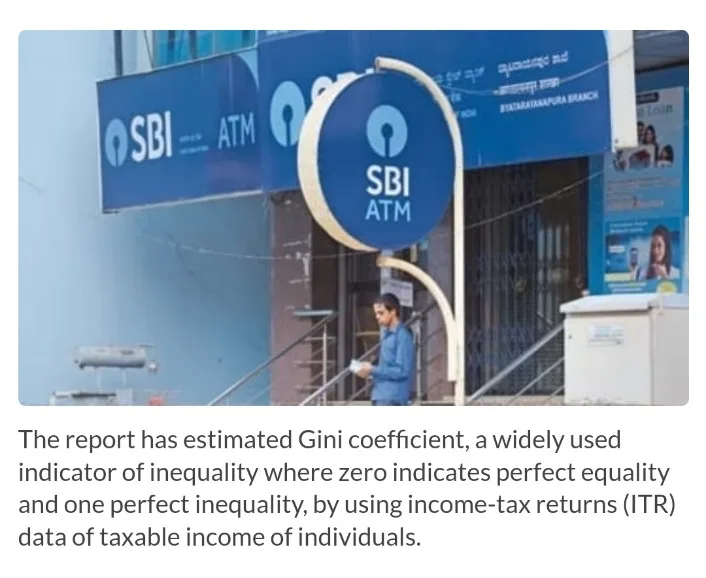In a comprehensive report unveiled on Monday, Soumya Kanti Ghosh, the Chief Economist of the State Bank of India (SBI), offers a compelling counterargument to prevailing notions of economic inequality in India. The report contends that observations of unequal growth often overlook a significant socioeconomic transformation occurring at the lower echelons of the economic pyramid.
Employing the Gini coefficient—a widely accepted measure of inequality—the analysis delves into income-tax returns (ITR) data, focusing on the taxable income of individuals. The report reveals a noteworthy decline in individual income inequality from 0.472 in the 2015 assessment year (AY) to 0.402 in AY2023. Anticipating further improvement, the State Bank projects a Gini coefficient of 0.402 in AY2023.
The report places emphasis on a remarkable shift in the income pattern of micro, small, and medium enterprises (MSMEs). Approximately 19.5% of micro firms, boasting gross incomes up to ₹10 crore between 2013-14 and 2020-21, have undergone a transformative process, elevating themselves to small, medium, and large firms. This evolution is seen as a positive indicator of economic trajectory.
Furthermore, the report challenges the validity of conventional indicators traditionally used to gauge the economic well-being of non-affluent segments of society. It argues for the incorporation of new indicators, with a particular spotlight on the rise in disposable incomes. The surging popularity of food delivery platforms, even in smaller cities, is presented as compelling evidence of diminishing inequality. Zomato, holding over 50% market share in the Indian food delivery sector, is cited as a pertinent case study refuting claims of economic distress.
In a nuanced approach, the report concludes by cautioning against relying on metrics like two-wheeler sales as a proxy for rural economic distress. It underscores the imperative need for a more sophisticated and comprehensive understanding of economic indicators in the Indian context.






